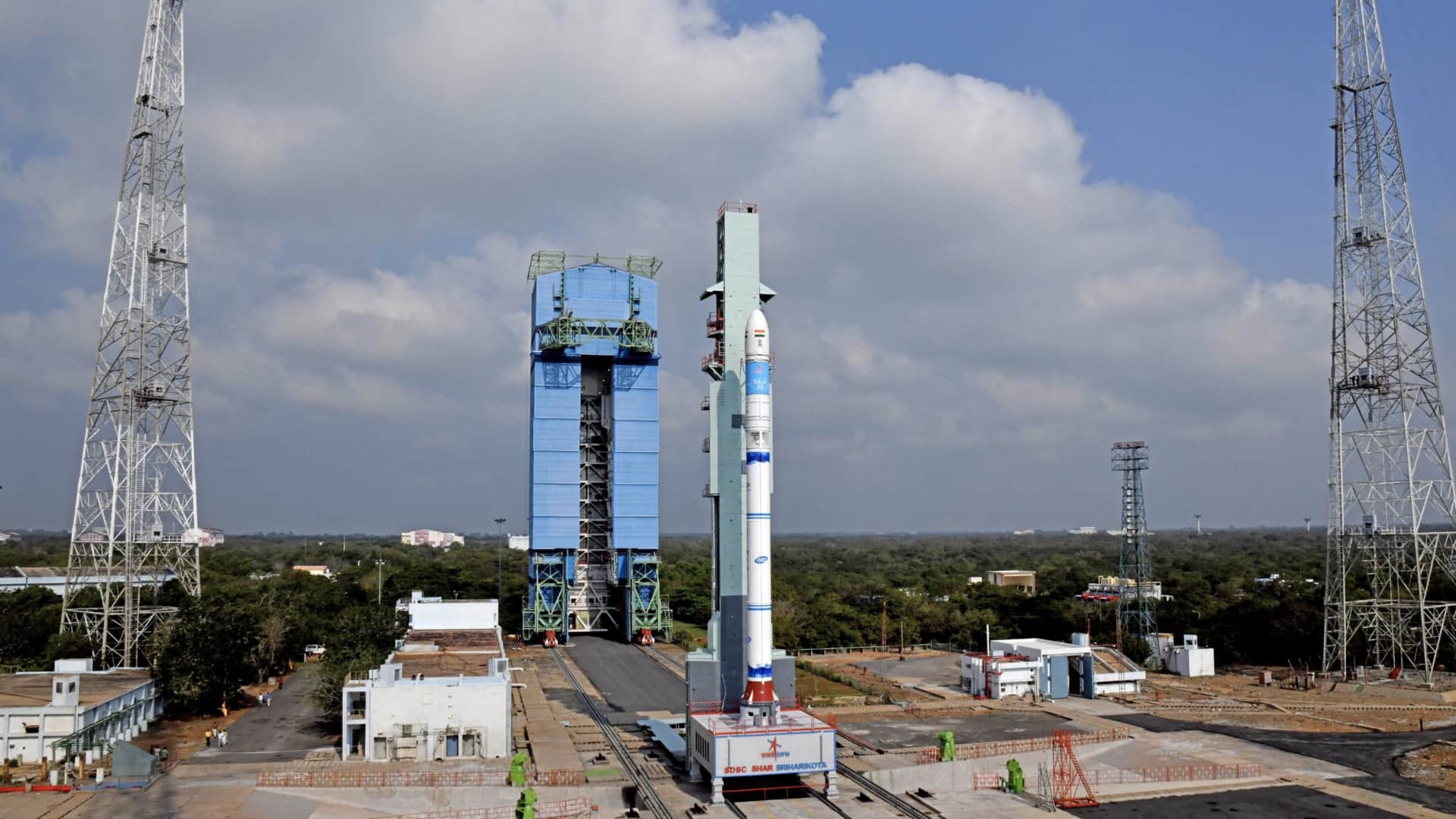
ISRO SSLV-D2 launched from Satish Dhawan Space Centre: Key facts
What's the story
Indian Space Research Organisation (ISRO) has launched the second edition of the Small Satellite Launch Vehicle (SSLV-D2) from the Satish Dhawan Space Centre at Sriharikota, Andhra Pradesh.
It is carrying three payload satellites, namely, ISRO EOS-07, Janus-1, and Chennai-based start-up Space Kidz India's AzaadiSAT-2.
During its 15-minute flight, the rocket will inject these satellites into a 450km circular orbit.
Context
Why does this story matter?
Because of its low-cost operations, quick turn-around time, flexibility in accommodating multiple satellites, and need for minimal launch infrastructure, the SSLV is touted as a game-changer in space exploration.
These attributes help it serve on a 'launch-on-demand' basis, giving a boost to India's aspirations of having an affordable but effective way of launching satellites and maintaining a strong network of space assets.
Key facts
SSLV can carry satellites of up to 500kg
The SSLV is a 34-meter tall and 2-meter wide rocket having a lift-off mass of 120 ton. It has three solid propulsion stages and a velocity terminal module.
The vehicle can launch up to 500kg satellites to low earth orbits on a 'launch-on-demand' basis, as per ISRO.
Designed with commercial launches in mind, it can be integrated, tested, rehearsed, and launched within a week.
Twitter Post
Take a look at the launch
LAUNCH! India's SSLV rocket launches from the Satish Dhawan Space Centre on its second attempt to reach orbit.
— Chris Bergin - NSF (@NASASpaceflight) February 10, 2023
Overview:https://t.co/2jBe6uWXKY - by William Graham (@w_d_graham).
ISRO Livestream:https://t.co/5G3dnhvSPe pic.twitter.com/6kDxx2s7o7
Payloads
Everything to know about the payloads
The EOS-07 is a 156.3kg satellite designed, developed, and realized by ISRO. It packs mm-Wave Humidity Sounder and Spectrum Monitoring Payload experiments.
The Janus-1 is a 10.2kg satellite that belongs to ANTARIS, US. The third payload is an 8.7kg satellite called AzaadiSAT-2. It is a combined effort of about 750 girl students from across India headed by Space Kidz India from Chennai.
Quote
SSLV-D2/EOS-07 mission accomplished: ISRO
"SSLV-D2/EOS-07 mission is accomplished successfully. SSLV-D2 placed EOS-07, Janus-1, and AzaadiSAT-2 into their intended orbits," said ISRO in an official tweet.
First attempt
SSLV's first launch ended in partial failure last year
The SSLV's maiden launch ended in partial failure last year on August 7. The vehicle performed as expected at all stages but witnessed data loss in the final phase.
"Satellites got placed in an unstable orbit and no longer usable. Failure of a logic to identify a sensor failure and go for a salvage caused deviation," ISRO said at the time.